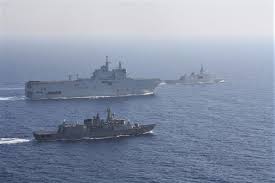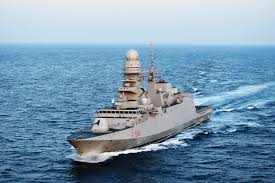Stamp: Stepan Makarov (1849-1904) (Soviet Union, USSR 1989)
Stepan Makarov (1849-1904) (Soviet Union, USSR 1989)
28 December (Soviet Union, USSR ) within release Russian Admirals. goes into circulation Stamp Stepan Makarov (1849-1904) face value 35 Russian kopek
| Stamp Stepan Makarov (1849-1904) in catalogues | |
|---|---|
| Michel: | Mi:SU 6042 |
Stamp is horizontal format.
Also in the issue Russian Admirals.:
- Stamp - Andriej Popow (1821-1898) face value 30;
- Stamp - Stepan Makarov (1849-1904) face value 35;
- Stamp - Władimir Korniłow (1806-1854) face value 5;
- Stamp - Władimir Istomin (1809-1855) face value 10;
- Stamp - Giennadij Nevel (1813-1876) face value 15;
- Stamp - Gregory Butakov (1820-1882) face value 20;
Stamp Stepan Makarov (1849-1904) it reflects the thematic directions:
A ship is a large watercraft that travels the world's oceans and other sufficiently deep waterways, carrying passengers or goods, or in support of specialized missions, such as defense, research and fishing. Historically, a "ship" was a sailing vessel with at least three square-rigged masts and a full bowsprit. Ships are generally distinguished from boats, based on size, shape and load capacity.
A navigator is the person on board a ship or aircraft responsible for its navigation. The navigator's primary responsibility is to be aware of ship or aircraft position at all times. Responsibilities include planning the journey, advising the ship's captain or aircraft commander of estimated timing to destinations while en route, and ensuring hazards are avoided. The navigator is in charge of maintaining the aircraft or ship's nautical charts, nautical publications, and navigational equipment, and they generally have responsibility for meteorological equipment and communications. With the advent of satellite navigation, the effort required to accurately determine one's position has decreased by orders of magnitude, so the entire field has experienced a revolutionary transition since the 1990s with traditional navigation tasks, like performing celestial navigation, being used less frequently. Using multiple independent position fix methods without solely relying on electronic systems subject to failure helps the navigator detect errors. Professional mariners are still proficient in traditional piloting and celestial navigation.
A navy, naval force, military maritime fleet, war navy, or maritime force is the branch of a nation's armed forces principally designated for naval and amphibious warfare; namely, lake-borne, riverine, littoral, or ocean-borne combat operations and related functions. It includes anything conducted by surface ships, amphibious ships, submarines, and seaborne aviation, as well as ancillary support, communications, training, and other fields.
A warship or combatant ship is a ship that is used for naval warfare. Usually they belong to the navy branch of the armed forces of a nation, though they have also been operated by individuals, cooperatives and corporations. As well as being armed, warships are designed to withstand damage and are typically faster and more maneuverable than merchant ships. Unlike a merchant ship, which carries cargo, a warship typically carries only weapons, ammunition and supplies for its crew.




